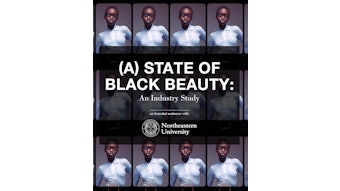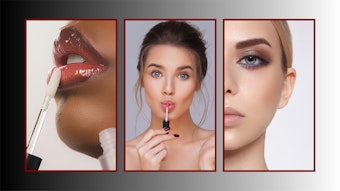Don Havery, cosmetics technology team, FDA, told attendees that FDA’s “mission hasn’t changed, but (its) structure is definitely changing.” Budget cuts have effected FDA staffing at the office of cosmetics and colors while government and special-interest groups continue to push for more regulations. Havery stressed the advantages of the participating in the online Voluntary Cosmetic Registration Program (VCRP) in the face of increased regulatory scrutiny. Havery stated that the agency is working on unresolved botanical ingredients issues within VCRP (largely due to inconsistencies in the INCI dictionary) and that color nomenclature “is definitely confusing.” U.S. color names plus CI numbers are not recognized by the current system.
Robert Eshelman, OTC drug team, FDA, highlighted labeling regulations. He noted that the final rile for sunscreens was published on May 21, 1999 with an original effective date of May 21, 2001. However, there was almost immediate stay, and Eshelman noted that sunscreen labeling regulations are still “a work in progress.”
David Steinberg, Steinberg & Associates, spoke about REACH. The scope of its coverage and the cost of registration seemed to scare the devil out of the crowd. Steinberg presented numbers of €25,000 for registration of an ingredient and upwards of $2.5 million for testing of an ingredient. Nothing is exempt—packaging, for example, can be hit. The ink and adhesive used on the label… “the cosmetic industry is not very high on the totem pole in REACH.”
Carl Geffken, president of Carl Geffken Consultants and a GCI columnist, reviewed the status of international regulations. Geffken began his presentation by stating, “Most companies, if not already in international markets, want to be international.” The remainder of his presentation illustrated the complexity of regulations, and the similarities and contrasts in regulations worldwide. Going international means doing your homework.
Jack Bierig, a partner at Sidley Austin LLP and ICMAD legal counsel, spoke about advertising claims, warning marketers to watch the claims they make. Claims are an opening for both regulatory scrutiny and lawsuits. “Hypoallergenic,” for example, is an ideal opening. Inevitably, one consumer is going to have a negative reaction to the product. As the trend for naturals and organics grow, “organic” is one of the most scrutinized claims.
Judith Praitis, esquire, Sidley Austin LLP, offered an insightful presentation on California’s Proposition 65 and the consequences for the personal care and cosmetics industry.
Billed as an act to protect drinking waters, California voters passed Proposition 65 in 1986. Vagaries in the wording have allowed “bounty hunter plaintiffs” to apply Prop 65 to products across a gamut of industries, taking advantage of the fact that it is usually cheaper to settle than to fight. Leaded, colored glass, for example, cost that industry $7 million. The position presented in court was that there was a reasonable level (as defined in Prop 65) of exposure to lead through touch. Overall, the mean settlement is $160,000, though there are many nuisance settlements for $20-60,000.
Lucrative plaintiff action has made every aspect of the personal care/cosmetic industry susceptible to potential liable actions. Soot from candles, for example, produces Prop 65 chemicals, and Prop 65 chemical are, with very few exceptions, used in the production of clothe materials often used in packaging. This means that manufacturers and marketers have to safeguard themselves by certifying that every aspect of their products meet Prop 65 standards.
Non-compliance is also costly in itself. The penalties can be up to $2,500 per day for each violation. Praitis put that cost in perspective by using a bottle of 100 daily vitamins as an example. In theory, there are 100 violations worth $2,500 in that one bottle—multiplied by X number of users. Once a claim is identified, a manufacturer has a year to comply before fines are imposed.
California has taken the view that if you can be sued in the state, you are under the guidelines of Proposition 65, and both manufactures and retailers can be held liable if the products are sold in the state. The state has interpreted the wording of “knowingly” and “intentionally” in the proposition to mean you should have reasonable knowledge of the chemicals in a product. In California, a business has intentionally spread Prop 65 chemicals (violating the law) “as long as the business intend to sell the product.” In short, if the intention is only to sell product and you are ignorant of chemicals in any aspect of the product, you have intentionally violated the law.
The attorney generals expects manufacturers (and to some extent, retailers) to understand the list of chemicals. This is not a simple task. Chemical beyond the label must understood, as well as any interactions under any condition. One example of this type of interaction is starches submitted to high heat (cereals, french fries and virtually all snack foods), which produce acrylamide¬. There are other hidden offenders. Most plant–based materials include metals. Herbal extracts, for example, contain cadmium, arsenic and lead in high enough trace amounts to be in violation. Tea has levels of arsenic. Both examples assure that naturals and organics are no safer to Prop 65 rules than non-naturals. Again, both manufacturers and retailers are charged with the duty of knowing the chemical composition of product and packaging, and they are also expected to have a working knowledge of the new chemicals that may form as a product sits.
There have been positive developments for the defense side over the last year and a half. Chocolate manufactures have won against Prop 65 suits over lead content (all chocolate has natural trace amounts of lead), and the California “tuna wars” brought the most decisive Prop 65 victory for the defense. The attorney general charged the tuna industry was in violation of Prop 65 standards for mercury content. The defense was able to prove, however, that consumers, regardless of the level of mercury content in a tuna fish, are not exposed to that dosage in a can or serving of tuna. The real percentage was lower than Prop 65 standards.
Praitis’ final message is that no one—lawyers, those who watch regulation issues, the state itself—knows how Prop 65 will affect cosmetic manufactures. There is no consensus as to whether the state has the resources to actively pursue another regulatory issue in court or how courts will translate Prop 65 wording and standards to cosmetics.










